Elevating Brand Values as Artwork
By Julie Maggos, Senior Director of Experiential Design
& Graham Jefferson, Intermediate Experiential Designer
Brand values matter. They guide decisions, shape culture, and communicate what an organization stands for. Yet in the workplace environment, they are often either overdone, underplayed, or reduced to vapid graphics on the wall. Adopting a different strategy, our experiential design team takes an art-first approach to express brand values and the history of our clients through intentional, timeless showpieces that people want to contemplate and admire.
These works prove that when intention leads, brand expression does not shout, it resonates. Art-first experiential design elevates brand values beyond words or logos, turning them into enduring and remembered installations. The art of interpreting language and culture through physical form is what makes these works feel timeless and deeply interesting.
Unity, Respect, and Achievement Made Visible
Three large-scale installations for a consumer electronics client translate the organization’s guiding principles into form. A wall of mirrored hemispheres radiates outward in circular rhythm, allowing passersby to glimpse themselves as reflections and become part of the larger whole.
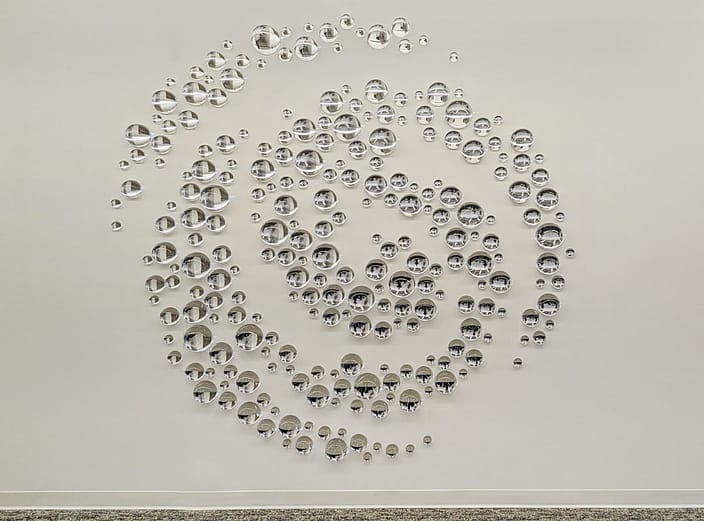
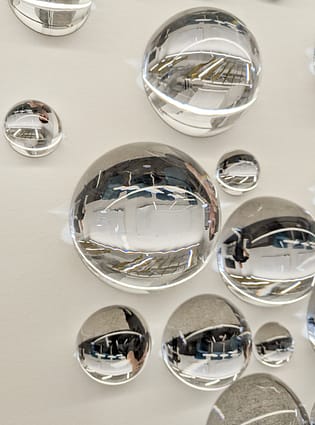
Nearby, a rippled wall installation suggests a drop of water entering a pool, its concentric waves spreading outward, symbolizing the reverberations that respect generates.
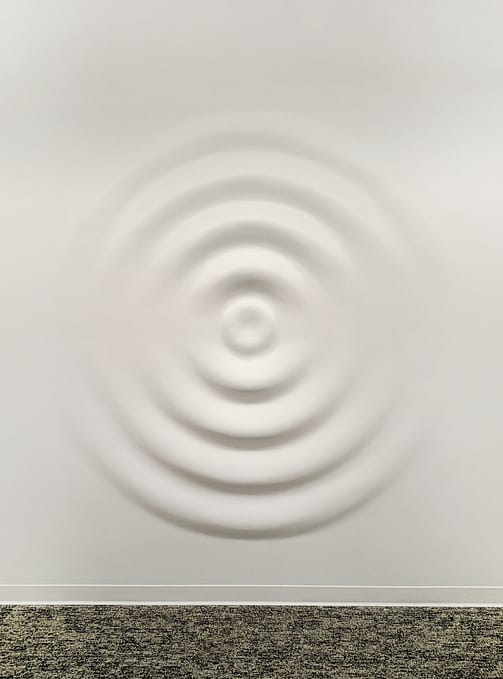
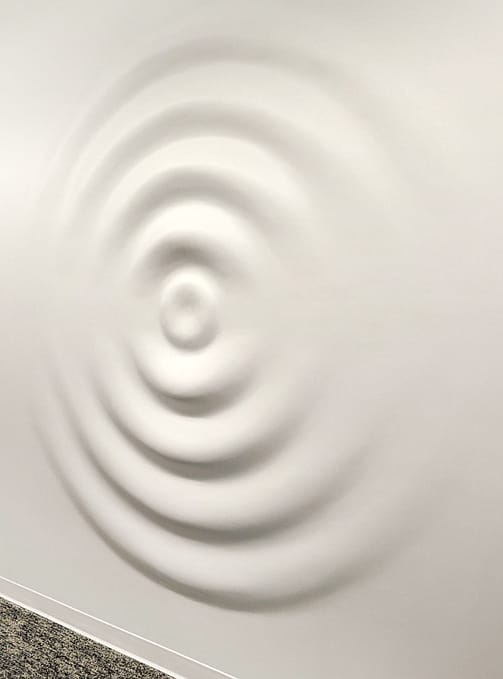
Completing the trio, an illuminated starburst composition evokes the company’s “Spirit of Winning,” through geometric forms that radiate light like a celebration in motion. Together, these works transform company values into shared, tangible experiences that feel fully integrated within the space.
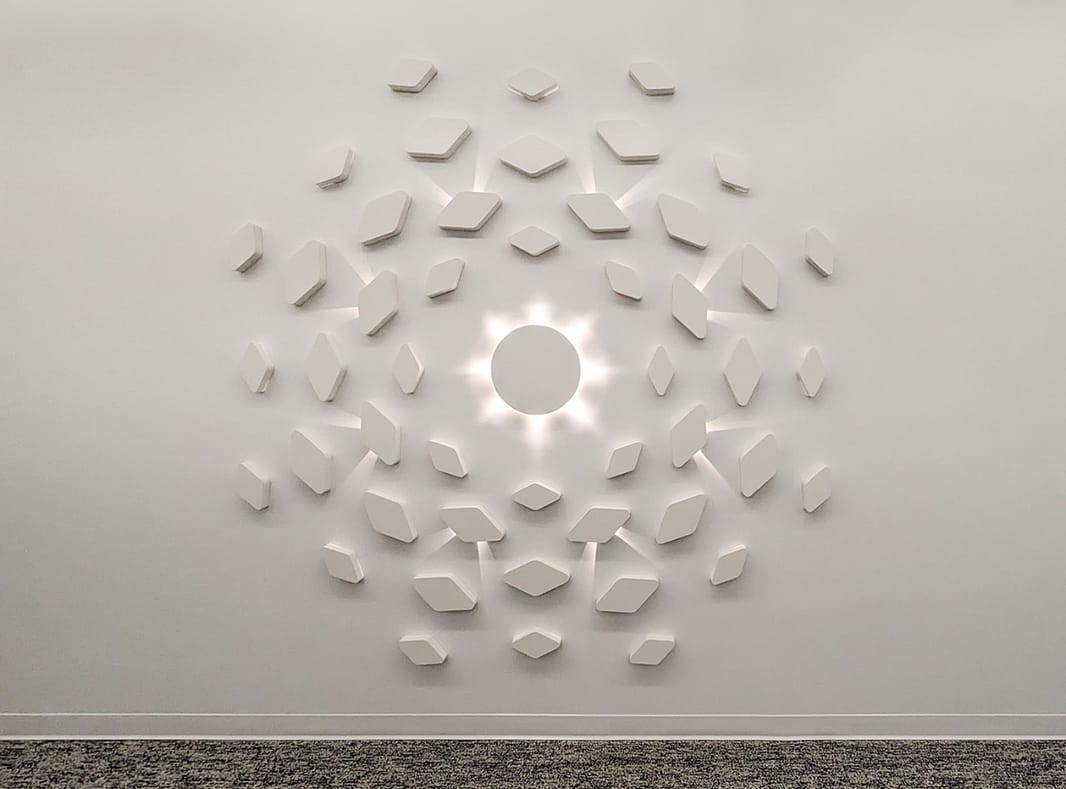
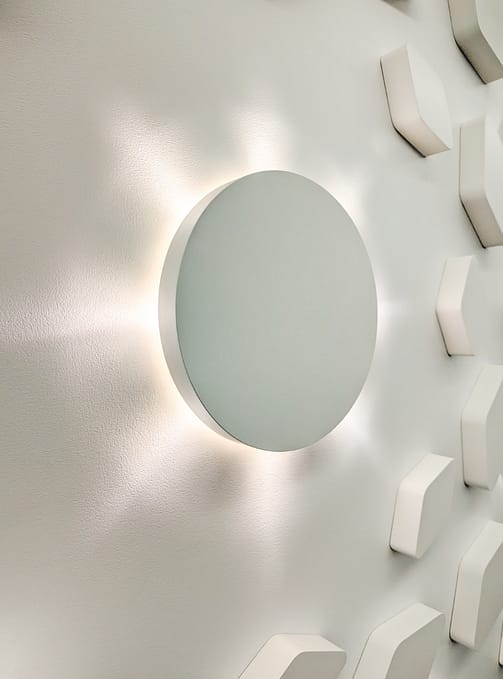

A Story of Impact in Motion
Sculptural installations bring the history and ethos of a financial institution into focus. Stained segments of blue wood configured within a frame draw inspiration from the construction of a historic dam, a project that marked the company’s rise to industry leadership. The blue forms shift in saturation of hue and length, evoking the blockage and flow of water, translating legacy into visual rhythm.
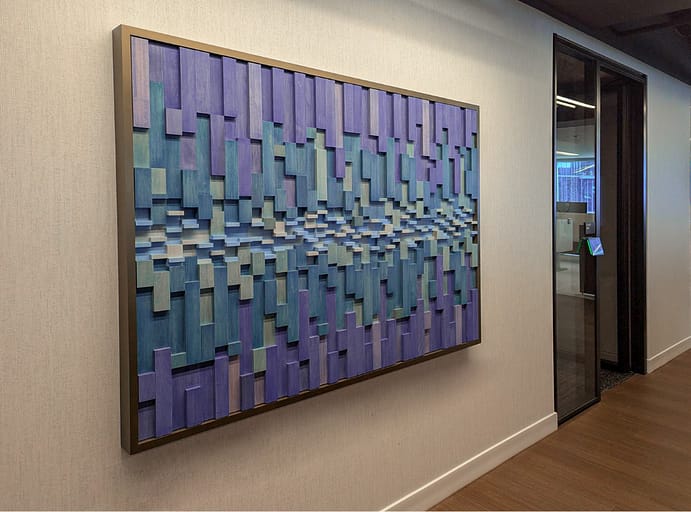
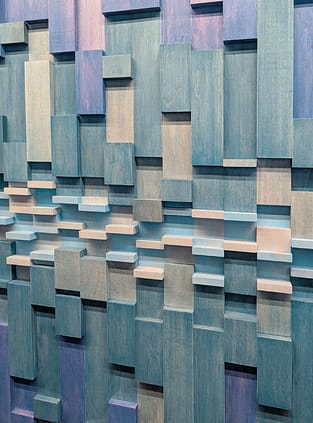
At another site in the workplace, a pair of sweeping metal works twist upward in tonal gradients, their momentum symbolizing growth and aspiration.

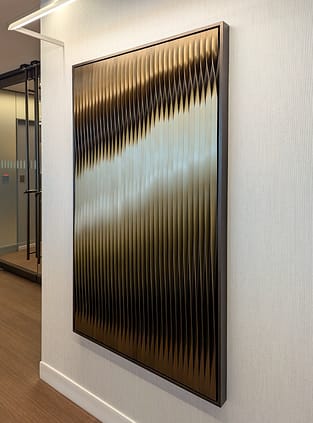

A third installation depicts historic Chicago Transit Authority railcars etched into layered panels that recall the company’s financing of mass transit improvements to modernize the urban infrastructure. Together with additional art throughout the workplace, these pieces turn legacy into artful expression, highlighting moments where history, ambition, and civic impact converged.
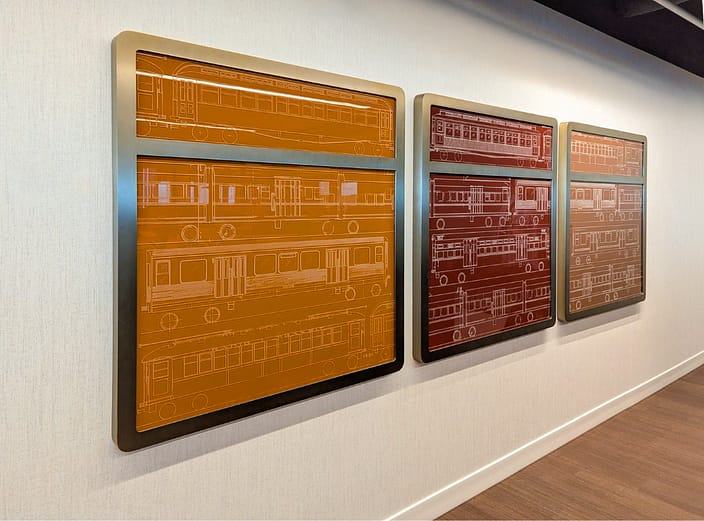
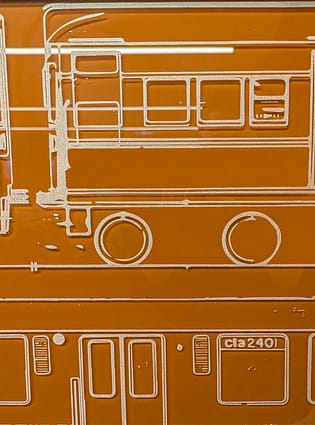
Values Shaped in Glass and Wood
For a financial institution, a series of commissioned works interprets abstract values through material and form. Painted panels layered within a geometric-shaped frame converge toward a single vanishing point, a metaphor for foresight and the ability to see what lies ahead.

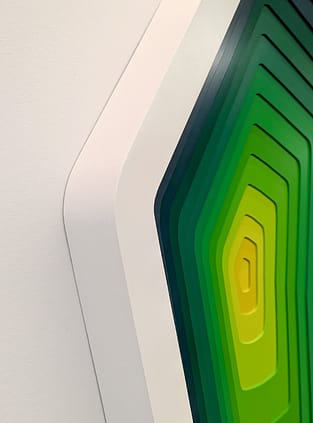
In another piece, grouped wood blocks rise and fall in an undulating composition, their density and weight suggesting stability and strength.


A third work uses planes of textured glass in shifting greens and blues, representing vitality, renewal, and steady growth. Together, as a lasting physical presence, these artworks evoke vision, permanence, and progress.


Conclusion
When an art-first approach resonates with the workforce and successfully represents an organization’s brand and cultural values, the impact goes far beyond visual appeal. Science demonstrates that the inclusion of beauty lets employees know they are valued for more than productivity, elevating their well-being and strengthening their connection to the workplace community and the organization’s mission. In this way, intentional design becomes not just an expression of identity but a catalyst for loyalty, pride, and lasting cultural impact, enabling people to actively live the values of the brand.

Julie Maggos
Senior Director of Experiential Design

